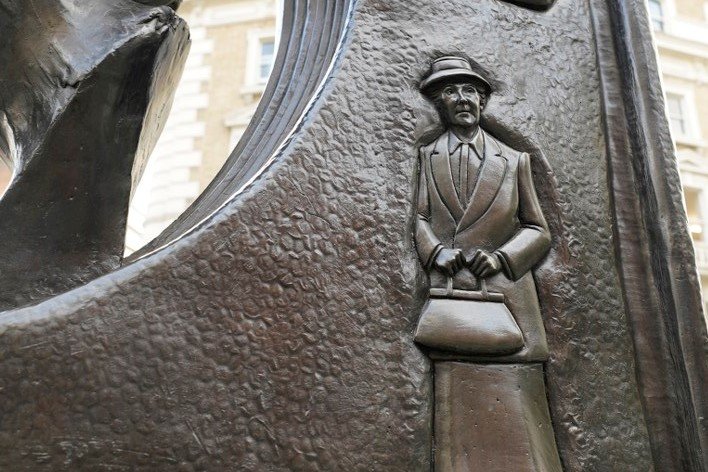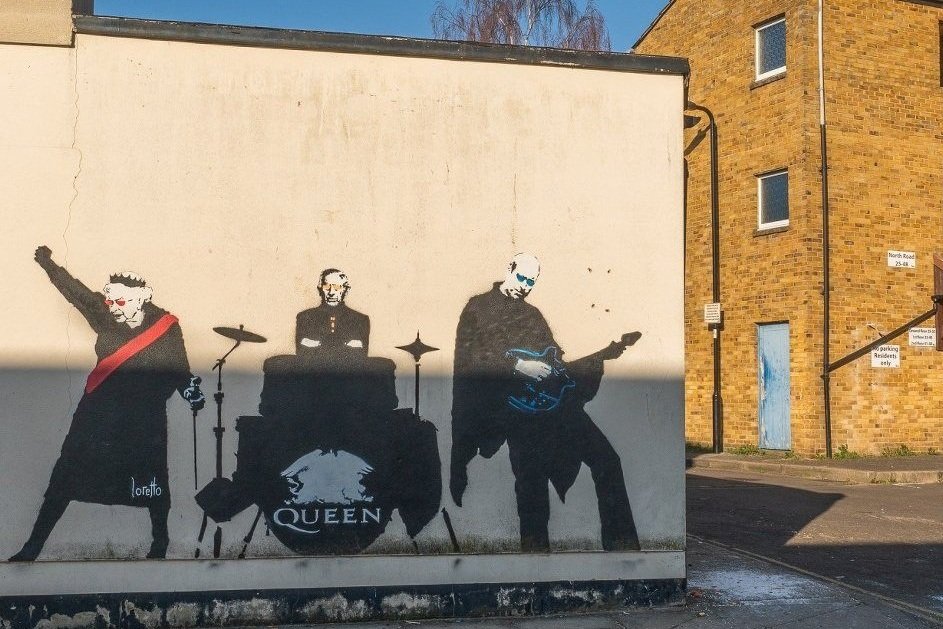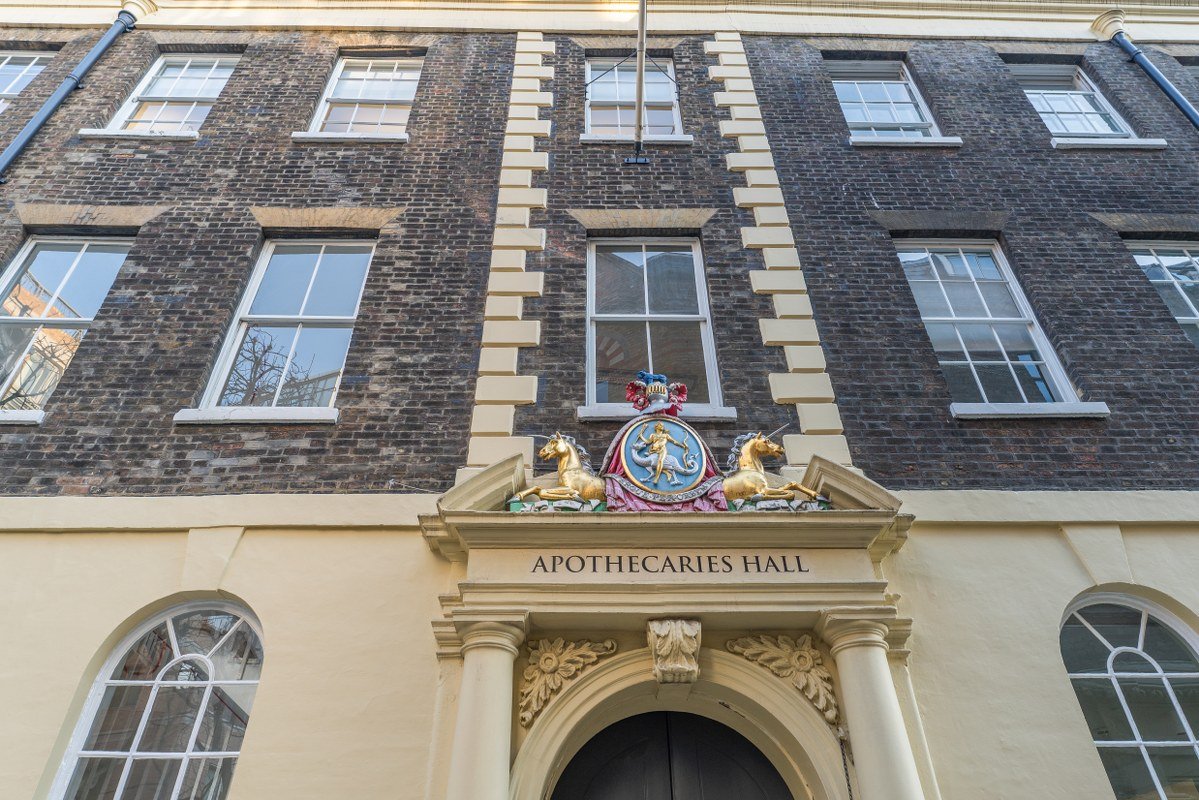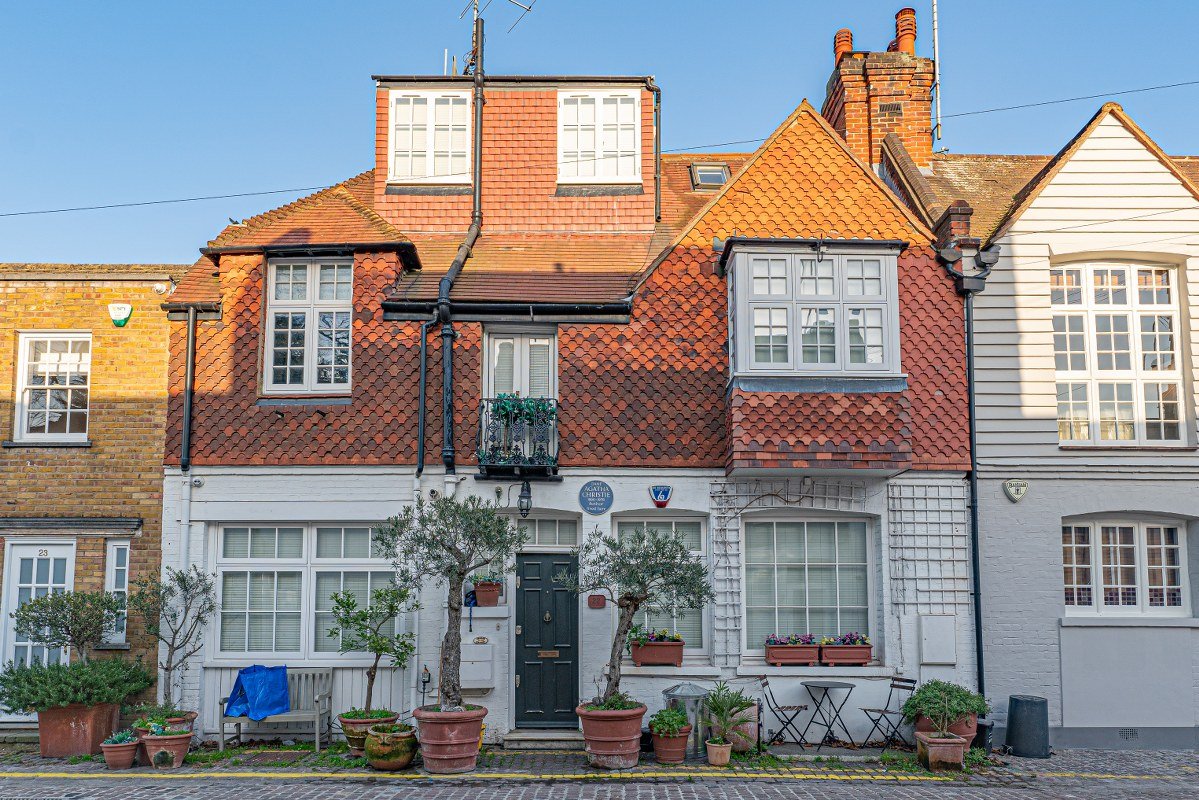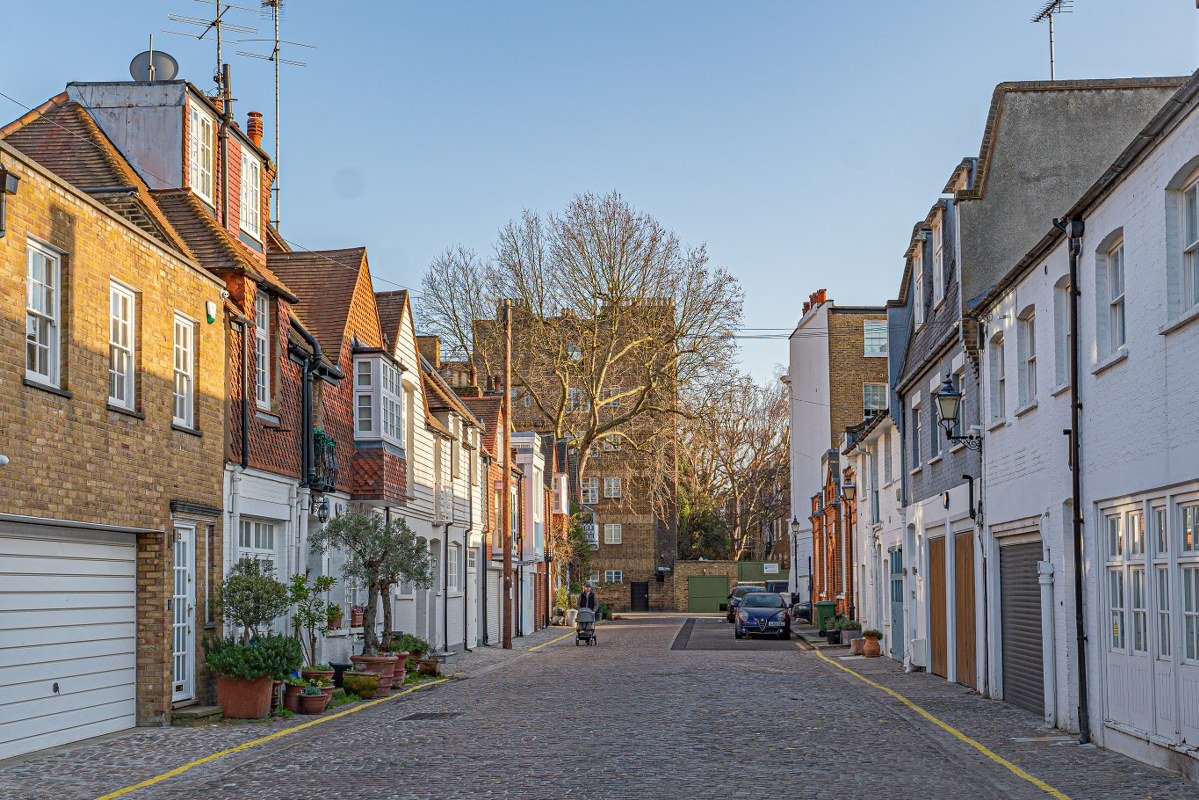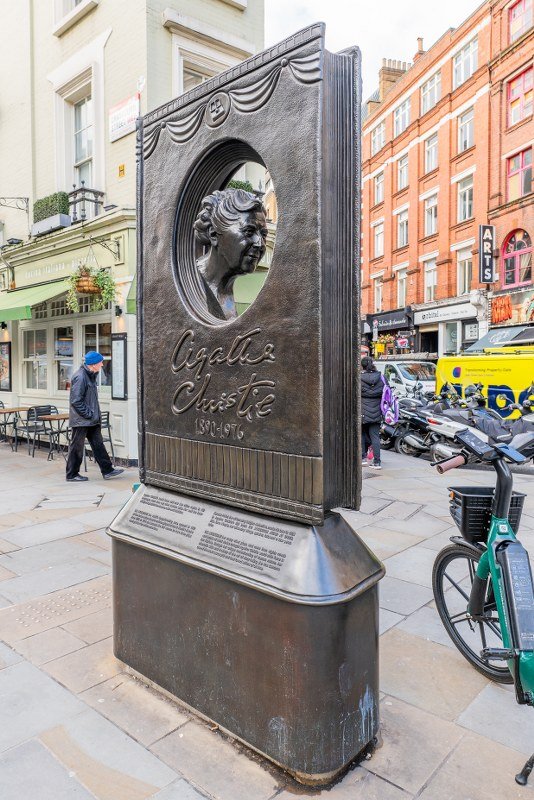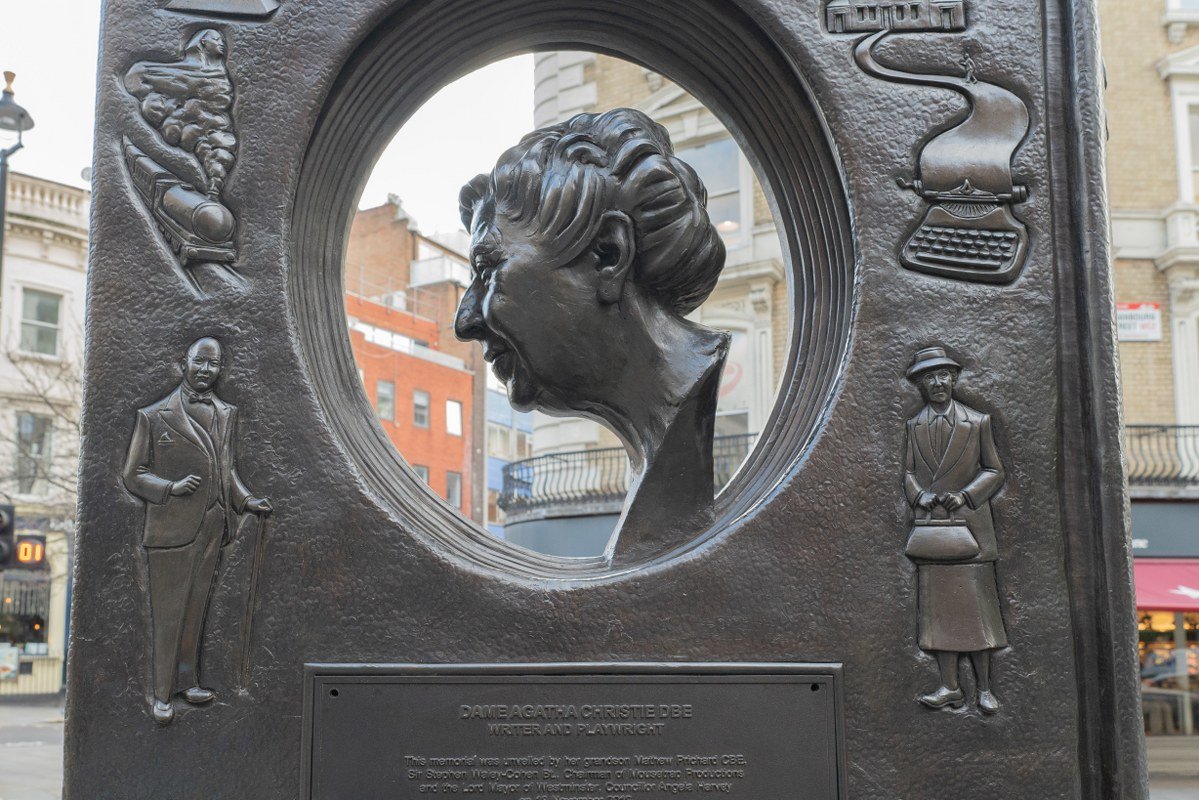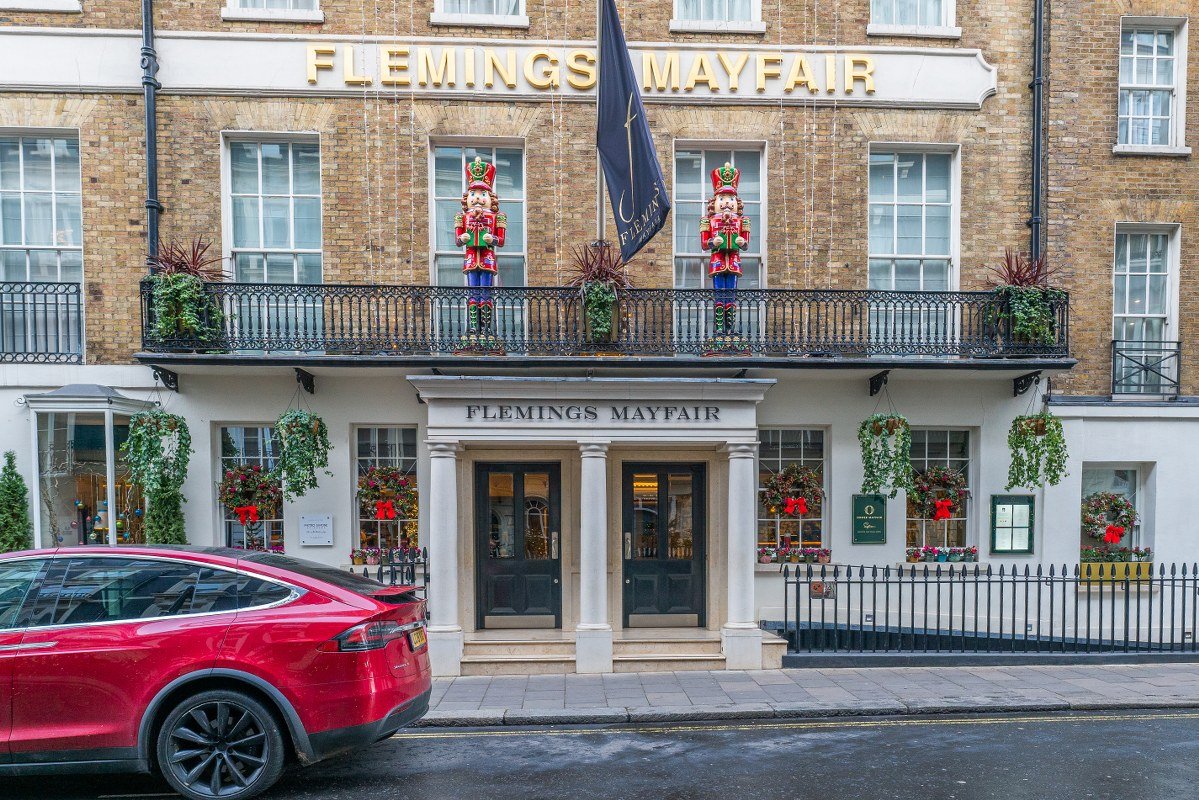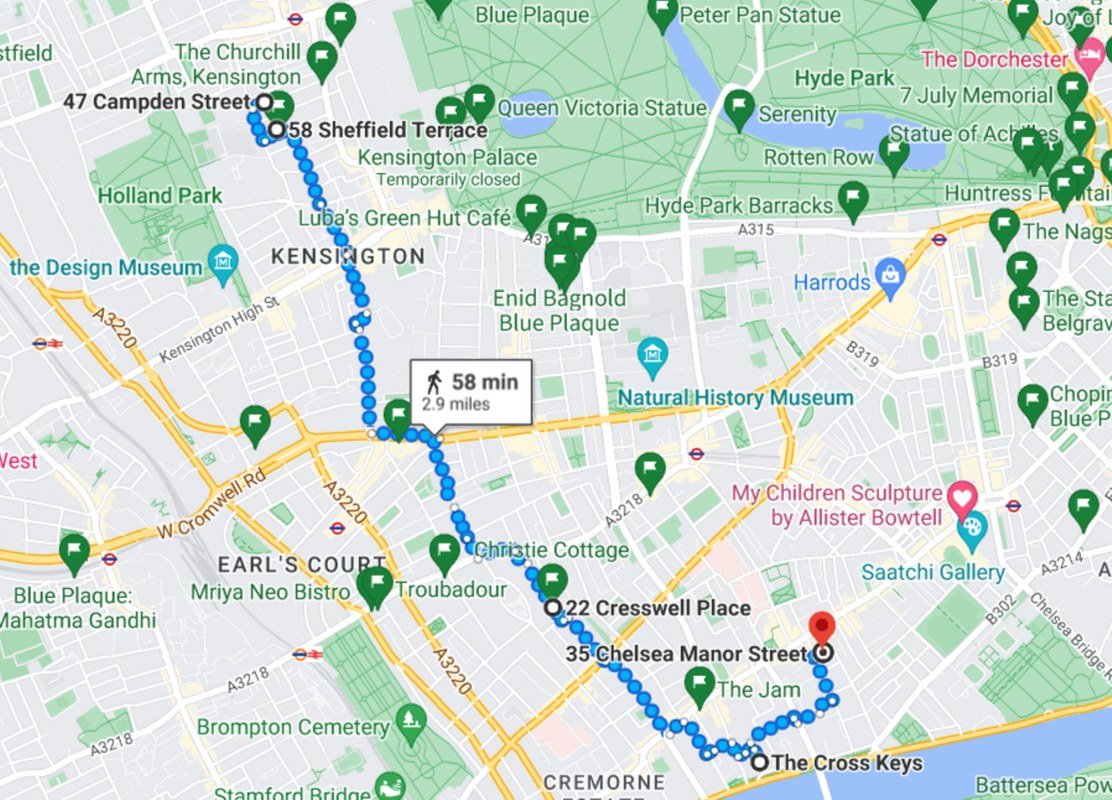Agatha Christie in London: 14 places in London associated with the Queen of Crime (free Agatha Christie London walking tour with a map)
This post contains affiliate links.
(If you use these links to buy something, I may earn a commission at no additional cost to you).
Agatha Christie is one of the best-selling writers of all time.
Her novels sold more than two billion copies worldwide, and so far, she has been outsold only by Shakespeare and the Bible!
“I am afraid, Ma’am… miss Agatha can read!”
Agatha Christie taught herself to read when she was four. She has done it against the will of her mother, who considered reading at an early age unhealthy! She wanted her youngest daughter to master this skill only after she turned 8. But “the damage” was done, and young Agatha entered the world of storybooks. Her love for reading and wild imagination led her eventually to a spectacular career as an author herself.
Between 1920 and 1965, she produced at least one book every year!
Although Agatha Christie was born and raised in Devon, a significant part of her eventful life and career took place in London.
She moved around a lot and happened to live in some of the most beautiful parts of London!
The UK’s capital was also often a front for criminal activities described in her crime novels.
Below you will find 14 spots in London that are associated with the Queen of Crime.
Not all of the places described below are within walking distance. However, at the end of this post, you will find a few interactive maps. They will help you to see most of these spots in a relatively short time (2-3 hours).
Enjoy the read!
PLACES IN LONDON ASSOCIATED WITH AGATHA CHRISTIE
Ealing and the grave of real Miss Marple
Agatha Miller (Christie is a surname after her first husband) spent most of her (happy!) childhood in Devon.
However, she was not a stranger to London from her early years.
One of London's spots most frequently visited by her was the house at 99 Uxbridge Road in Ealing.
At this address, for over 30 years, lived her grand aunt Margaret Miller, a woman who was the inspiration for Christie’s iconic character, an elderly amateur detective, Miss Marple.
Agatha Christie wrote 12 novels and 20 short stories featuring the legendary Miss Jane Marple.
Margaret Miller was a prolific knitter and crocheter and shared with Miss Marple, among other things, similar “skepticism about human nature”.
Agatha was very fond of her.
There is not much to see in the spot where Christie’s aunt used to live - the house at 99 Uxbridge Road in the ’60s was replaced with office blocks.
However, at South Ealing Cemetery, you can find a grave of Christie’s aunt - she died in 1919 at the age of 92.
In the same spot are also buried the parents of Agatha Christie - Frederick and Clarissa Miller.
Without a doubt Agatha visited this place frequently.
South Ealing Cemetery is particularly pleasant to visit during the spring.
If you end up visiting this spot, make sure that you also have a look at a rather unusual mural of the Royal Family. You can find it on the nearby street called North Street.
At the beginning of the 20th century, Ealing was a posh suburb of London.
However, during the period when Christie visited her aunt there, a few murders took place locally.
Back then, events like that were vividly described in newspapers.
It is likely that those events triggered Agatha Christie's imagination and later pointed her in the direction of writing crime novels.
2. The place where young Agatha gained knowledge about poisons (Apothecaries Hall)
“It was while I was working in the dispensary that I first conceived the idea of writing a detective story.”
A.Christie “An Autobiography”
During the First World War Christie served as a nurse in the Devon area.
However, she also trained to become a Pharmacy Technician.
In 1917 she passed the Apothecaries Hall Assistants’ Exam in London.
Although she did not enjoy this job very much, the knowledge collected during her training (about toxic drugs and poisons!) came in handy during her later career as a crime writer.
3. Agatha Christie’s first home in London (5 Northwick Terrace)
In 1914 (at the beginning of the First World War), a 24-year-old Agatha married Archie Christie.
The war kept them mostly apart, but they moved together to the small apartment at 5 Northwick Terrace (not far from Regent Park) in 1918.
The Second World War that followed two decades after turned this property into ashes. Therefore today, you cannot see the exact Christie’s house.
However, the neighboring properties of no 9 and 10 managed to survive the air raids, and they can give you an idea of what Christie’s first home in London looked like.
“That was just two rooms (…), and rather shabbily furnished, though pleasant, with faded chintz and a garden outside. It was in one of those biggish old-fashioned houses, and the rooms were spacious (…). It had a microscopic kitchenette and bathroom (…). But we were happy there (…) the start of my new life, my married life.”
Agatha Christie about her flat at 5 Northwick Terrace in her “An Autobiography”
4. Christie Cottage - the mews house that inspired Murder in the Mews
In 1920, after a series of rejections from publishers, Agatha Christie finally managed to print her first novel, The Mysterious Affair at Styles (for the first time featuring detective Hercule Poirot!). After achieving success with her novels (with no shortage of money or imagination), Christie developed a passion for buying houses. She loved to make changes to them too!
Shortly after her divorce from her first husband, in 1929, Christie bought the cute mews house at 22 Cresswell in Chelsea.
It is fair to say that Christie loved this property (she kept this property for the rest of her life).
Her writing room was located on the top floor!
This house is believed to be an inspiration for Christie’s Murder in the Mews.
Today blue plaque on the facade of this house commemorates Christie's residency in this place.
The whole Cresswell Place street is full of charming little cottages.
Before the cars took over London streets, horse carriages were the most common source of transportation. The animals were kept in small properties on narrow streets (called mews), usually located at the back of more grand houses. The stables at Cresswell Place were serving the properties at beautiful Drayton Garden Street (parallel to Cresswell Place). After the collapse of the “horse transportation industry”, the stables were turned into houses.
Location of Christie’s Cottage:
5. Christie’s house near Notting Hill
Agatha Christie remarried in 1930.
At 47–48 Campden Street she lived with her second husband, archaeologist Max Mallowan, between 1930 and 1934.
The nearest tube station is Notting Hill.
A beautiful area for a stroll!
6. The house where Christie wrote Murder on the Orient Express
To no 58 Sheffield Terrace in Holland Park, Agatha Christie moved with her husband Max in 1934.
At this address, she wrote some of her most famous works: Murder on the Orient Express, The ABC Murders, and Death on the Nile.
In 1941 the couple was forced to leave this property because of the heavy bombing during the dark days of the Blitz.
Today, this property is marked with a blue plaque on the facade, celebrating the presence of the Queen of Crime at this address.
7. Isokon Building
When the house at Sheffield Terrace was damaged during the bombings, Christie and her husband Max moved away from central London to Isokon Building, located on Lawn Road in Belsize Park.
During the Blitz, Isokon Building was one of the safest private properties in London, as it had a reinforced concrete structure and was painted dark brown for camouflage.
During the Second World War, Agatha Christie was already an acclaimed novelist, and her unpublished books were kept in a secure safe, protecting them from the potential destruction by bombings during the Blitz!
8. Swan Court
The Art Deco block of flats at 35 Chelsea Manor Street has a few claims to fame in connection with the legendary crime writer.
Christie and her husband Max bought a unit here, in Swan Court, in 1948 and they lived in it (on and off) for 28 years.
Agatha Christie penned here some of her most famous murder mysteries: Witness for the Prosecution, Crooked House, and The Mousetrap.
Also, Third Girl is believed to be based on Swan Court.
9. Christie’s pub in London (The Cross Keys, Chelsea)
The Cross Keys is considered to be the oldest pub in Chelsea.
It was built in 1708.
On the facade of this pub, you can find a blue plaque dedicated to its famous regulars.
Among them is Agatha Christie!
This pub was also a watering hole in the past for Bob Marley, who used to live just around the corner from there.
10. St Martin's Theatre (and the wonderful story of The Mousetrap!)
Many of Christie’s stories have been adapted for the stage. The most famous one is The Mousetrap.
Christie originally wrote it as a radio play for the birthday of the wife of King George V, Queen Mary.
In 1952, The Mousetrap debuted on stage (at Ambassadors Theatre).
After its (unexpected) success, Christie asked this story not to be printed as long as it was being played in the West End.
Today, it is not a problem to find a version of this performance on the Internet or in a bookstore, but in St Martin’s Theater (where is currently played), at the end of each performance, the actor playing the murderer, as part of a tradition, still asks the audience to not reveal the plot to anyone after leaving the theater!
The Mousetrap is the longest-running play in the world. It has been performed for the last 70 years, with a break only during the pandemic. You can buy tickets here.
In the lobby of St Martin's Theatre, you can find an official information board stating the number of shows performed to date.
On the facade of St Martin's Theatre, you can find a blue plaque celebrating the unbelievable history of the play.
11. The statue of Agatha Christie in London (by Ben Twiston-Davies)
In 2012, to mark 25,000 London performances of the play The Mousetrap, a beautiful statue dedicated to Agatha Christie was unveiled to the public in the heart of West End.
Over the years, Christie’s plays have been produced at eight local theatres. Christie was also the first female playwright to have three plays performing simultaneously in London's theatre district.
Apart from Christie herself, the monument also includes depictions of her greatest creations, detectives Hercule Poirot and Miss Marple.
12. Agatha Christie’s favorite hotel in London
Brown’s Hotel in Mayfair is one of London's oldest existing hotels and most luxurious.
Although the outside blends with the rest of the street, the inside provides a splendid (a five-star!) experience (check out Brown’s website to get a taste of it!).
Agatha Christie frequently stayed here.
Other celebrated writers like Oscar Wilde, JM Barrie and (more recently) Stephen King also stayed here on various occasions. Brown’s most famous 19th-century regular was Queen Victoria herself. She enjoyed here the afternoon tea in the legendary wooden paneled Drawing Room. The hotel was also the location of the first successful telephone call in Europe. The phone used by Alexander Graham Bell to make this historical call still can be seen in the hotel today.
Brown’s Hotel claims to be Christie’s inspiration for Bertram’s Hotel.
However, there is another hotel in London (located only 10 min walk from the Brown’s Hotel) that shares this claim, and that is...
13. … the Flemings Mayfair Hotel
You can find the Flemings Mayfair Hotel on Half Moon Street, only steps away from Green Park tube station.
It is another luxurious five-star hotel in London.
During the Second World War, Agatha Christie briefly lived on this street with her second husband Max.
The hotel maintains the same claim as the Brown’s Hotel when comes to the origins of Bertram’s Hotel.
I guess this Christie's mystery will remain unresolved!
14. Hercule Poirot's flat in London! (Florin Court)
“Ah- but it is impossible, the way you never ask the right questions!
As a result, you know nothing of what is important.”
Poirot
The last place in London I want to mention here is Whitehaven Mansions.
Although not connected directly with Agatha Christie during her life, if you're a Detective Poirot fan, you just have to see it!
This Art Deco building was used as a fictional London residence of Agatha Christie's character Hercule Poirot in the TV series.
Nearby Charterhouse Square (a lovely little green space outside the Florin Court) is a perfect place to end this Agatha Christie London walking tour.
AGATHA CHRISTIE LONDON WALKING TOUR- MAPS
If you click on the maps below, a new window will open for live navigation in the field.
Part 1
The first (1h long) part of Christie’s walking tour runs through beautiful Kensington and Chelsea, and it will take you to five Christie’s places: 47 Campden Street, 58 Sheffield Terrace, 22 Cresswell Pl (Christie’s Cottage), The Cross Keys (Christie’s pub) and 35 Chelsea Manor Street.
Part 2
The second part of Christie’s London walking tour runs through central London.
During this 1h 20min stroll, you will see Flemings Mayfair, Brown’s and Ritz hotels, the (book) statue dedicated to Agatha Christie, St. Martin's Theatre (where you can see The Mousetrap play), Apothecaries' Hall, and fictional London residence of detective Hercule Poirot.
It is a lovely walk through one of the most charming parts of central London.
Part 1&2 combined
If you like walking and are blessed with good weather during your stay in London, you might consider doing both parts of the Agatha Christie London walking tour in one go.
It should take about 3 hours, and you will see one of the most beautiful London streets along the way.
Whichever option you choose, enjoy your trip!
INTERESTING READ
“An Autobiography” by Agatha Christie
Written by the Queen of Crime secretly, it was published only after her death. A beautiful recollection of important events of her life. Some believed it to be the best of her books. If you haven’t read it yet…
Did you enjoy this post?




